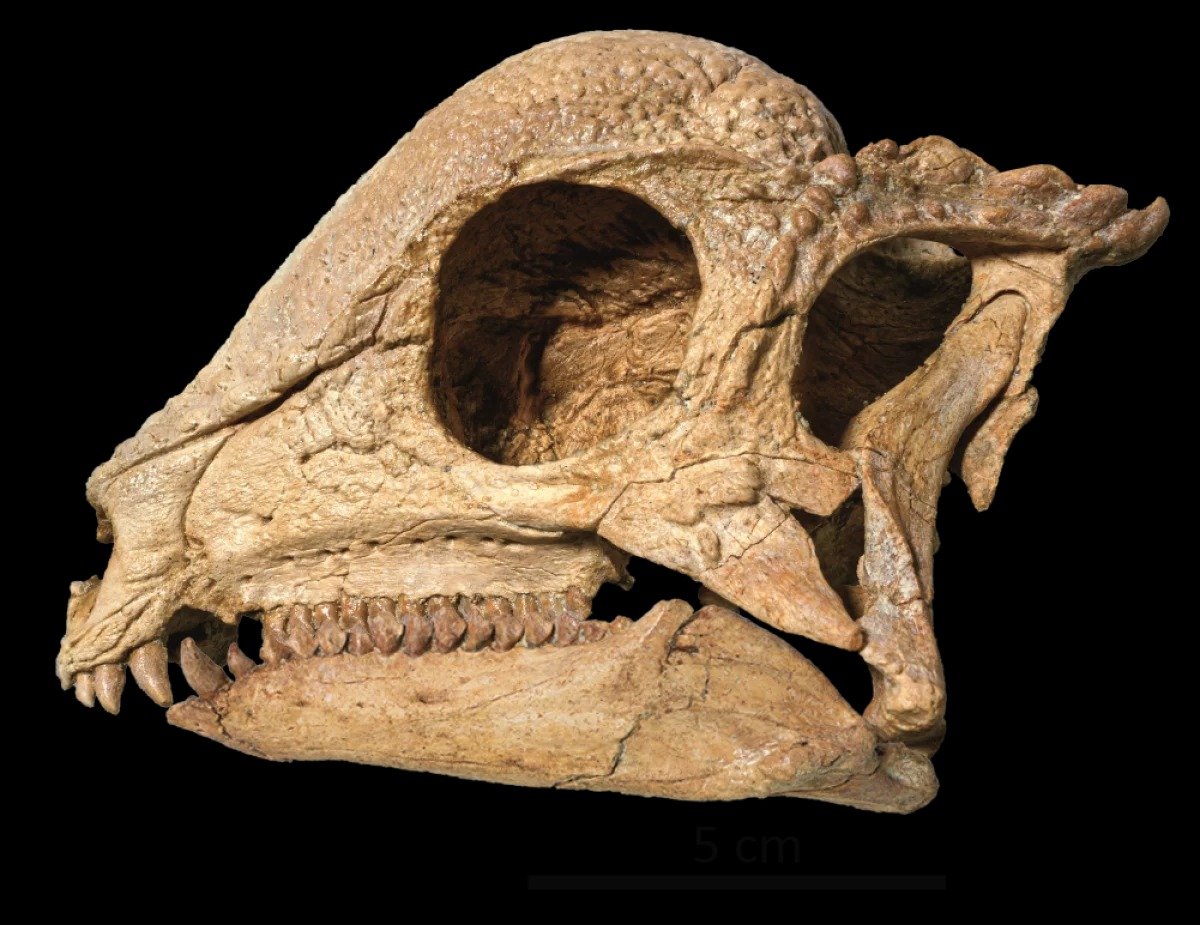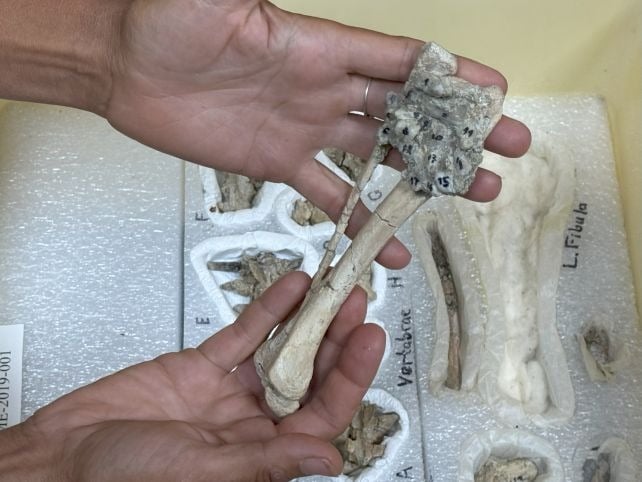Oldest Dome-Headed Dinosaur Unearthed In Mongolia
Language
Reading Level
Listen to Article
Alignment

The pachycephalosaurs are among the most mysterious dinosaurs of the Cretaceous period. Aside from their famous dome-shaped skulls, very little is known about these two-legged plant-eaters. That is because most fossils found so far consisted only of skull fragments. That changed on September 17, 2025, when scientists revealed the discovery of the most complete — and oldest — specimen of this dome-headed dinosaur.
Tsogtbaatar Chinzorig and his team stumbled upon the fossil in June 2019. The researchers were exploring a rocky area formed 115 million years ago in Mongolia's Gobi Desert, when they spotted a strange dome jutting from a cliff. At first, it seemed like just another rock. But as they came closer, their excitement grew — they had discovered a dinosaur skull!

Further excavation revealed the most complete pachycephalosaur fossil ever discovered. In addition to the rounded skull, the skeleton included the first record of the dinosaur's hand and tail. They even found gastroliths — stones the dinosaur swallowed to help grind plant material in its belly.
"It [the dinosaur] is about the size of a German shepherd," says Lindsay Zanno, a paleontologist on the team. "But you have to remember 75 percent of the body is neck and tail, so it would have only weighed about 12 pounds."
The skeleton was shipped to North Carolina in 2022, allowing the team to conduct a detailed study. Their analysis revealed it was a brand-new species of the dome-headed dinosaur. Dating back 105 to 118 million years, it is the oldest pachycephalosaur ever found!

Even though the dinosaur was only about two years old when it died, it already had a fully formed dome. This suggests that the dome appeared early in life. The scientists are not sure of its exact purpose. They speculate it may have been used for combat or social interactions.
"Whether they were battling it out for territory or mates is something we're not entirely sure of," says Zanno. "But what's clear is that whatever they were doing with those domes, they started practicing at a very young age."

The dinosaur's long legs and lightweight frame suggest that it was an agile runner. Its short arms and tiny hands indicate it did not use them for grasping or climbing. The stiff tail likely helped with balance while running or turning sharply.
Following the analysis, the fossil was returned to Mongolia. It now resides at the Mongolian Academy of Sciences.
Resources: NPR.com, Sciencealert.com, ScientificAmerican.com